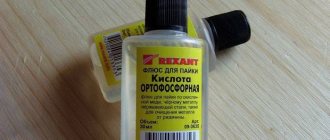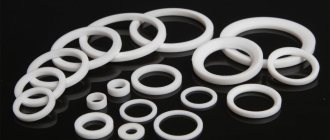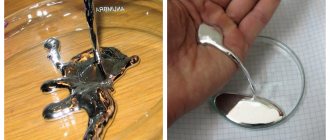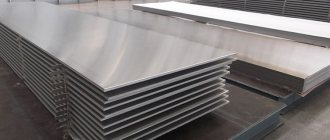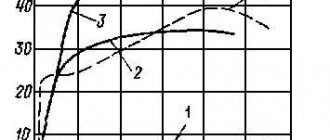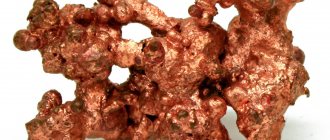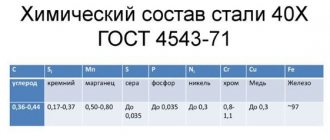Properties of phosphoric acid
The main property of orthophosphoric acid is its effect on the acid-base balance of the body, which leads to an increase in acidity.
Increased acidity increases the risk of developing many diseases, including tooth decay and early osteoporosis.
Another property of phosphoric acid (in high concentrations) is its ability to cause burns. The vapors of this acid can cause nosebleeds and atrophic processes in the nasal mucosa, and in some cases can lead to tooth decay and changes in the blood formula.
Rules for working with acid
Work with phosphoric acid should take place in a room with good ventilation. Be sure to wear a respirator to prevent caustic vapors from entering your respiratory tract and goggles to protect your eyes. If you do not have these protective equipment at hand, you should use a mask. Be sure to wear gloves and protect the exposed skin from contact with the substance, as this can lead to burns. If it gets on your skin, rinse it thoroughly under running water and then seek medical help.
Transportation of the reagent must be carried out in special transport equipped with iron tanks that are not susceptible to its destructive influence. It can also be transported using other vehicles, both land and water. But at the same time, all safety regulations must be observed.
It should be stored in a place protected from direct sunlight. The shelf life under such conditions is no more than 1 year.
Application of phosphoric acid
Phosphoric acid is widely used for various purposes:
- For cleaning rust from metal surfaces. It also helps further prevent the formation of corrosion;
- As a flux for soldering;
- In agriculture - for the production of mineral fertilizers;
- Contains freons (in industrial freezing units);
- For research in the field of molecular biology;
- In the production of household synthetic cleaning products, detergents and softeners;
- In the aviation industry (as part of hydraulic fluids).
Receipt
Laboratory methods of obtaining
Phosphoric acid is obtained in laboratory conditions from (V) oxide
P2O5 + 3H2O = 2H3PO4.
The reaction proceeds violently, so it is better to obtain it in this way in industry.
Phosphoric acid can be obtained from phosphates by the action of hydrochloric or sulfuric acid:
Na3PO4 + 3HCI = 3NaCI + H3PO4.
phosphorus (V) can be hydrolyzed
2PCl5+ 8H2O = 2H3PO4 + 10HCl.
Receipt in industry
In industry, the purest phosphoric acid is obtained thermally, for which phosphorus is burned:
4P +5O2 = 2P2O5.
Phosphoric anhydride reacts with water too violently, so phosphoric anhydride is mixed with phosphoric acid heated to 200°C in a concentration of 50-60%. The resulting acid is diluted and partially restarted in the process.
There is an extraction method for obtaining phosphoric acid directly from ores, for example, from apatite:
Ca5(PO4)3F + 5H2SO4 + n H3PO4 + 3H2O = (n+3) H3PO4+ 5CaSO4 H2O + HF.
The use of phosphoric acid in medicine
Phosphoric acid is widely used in dentistry for filling teeth. It is used to etch tooth enamel before the procedure.
The main difficulty is the inability to control the depth and degree of demineralization of dentin and enamel, as well as its complete removal before filling. Residues of phosphoric acid can lead to a decrease in bonding strength and the formation of an “acid mine”.
Orthophosphoric acid is also used in small quantities in tooth whitener formulations.
Formula
Phosphoric acid is an inorganic compound that is described by the formula H3PO4. Its molar mass is 98 g/mol. A microparticle of a substance is built in space in such a way that it connects hydrogen and oxygen atoms with each other. The formula shows that the chemical substance has the following composition:
| Number of atoms | Mass percentage | |
| Hydrogen | 3 | 3,1 |
| Phosphorus | 1 | 65,3 |
| Oxygen | 4 | 31,6 |
Application of orthophosphoric acid (E338) in the food industry
E338 (orthophosphoric acid) belongs to the group of antioxidants - additives that protect food products from oxidation and discoloration.
Phosphoric acid is used to acidify food and beverages. It provides a spicy or sour taste. It is distinguished from natural acidulants, for example, citric acid, by its low cost and ease of production, which allows it to be widely used in the manufacture of:
- Baking powders;
- Processed cheeses;
- Sausages;
- Sahara;
- Flavored drinks - Coca-Cola, Pepsi-Cola, Sprite.
Although phosphoric acid is approved for use in most countries as a food additive, many studies have shown its harmful effects on the body. Thus, it disrupts the acid-base balance, increasing its acidity. This can provoke the development of various diseases, such as caries and osteoporosis.
Frequent use of phosphoric acid in various products can cause digestive disorders - vomiting, nausea. Also, long-term use of products containing this dietary supplement may lead to food aversions and weight loss.
Safety precautions when working with acid
When working with this chemical element, safety precautions must be observed, as it poses a threat to human health. The room must have good ventilation. Cause a fire or explosion. Before you start working, you need to put on a respirator, gloves and goggles, as well as overalls and shoes.
If liquid gets on the mucous membranes and skin, dizziness, coughing, vomiting, and chemical burns may occur. In this case, you should call a doctor, wash the affected area, make a loose bandage and neutralize the phosphoric acid with alkali.
How to properly store and transport acid
When storing and transporting acid, the necessary conditions must be observed. It is allowed to be stored only in special containers:
- glass;
- polymer vessels;
- stainless steel vessels.
Phosphoric acid is an aggressive substance, and therefore the powder should be kept in an insulated container. No foreign substances should enter the acid. Containers for transportation and storage must be dry and clean.
In order for the solution to have the desired properties, all conditions must be met. If the composition is of poor quality, toxic fumes may be released. Among other things, such a solution will not be able to protect the metal surface from the negative influence of surrounding factors.
The most suitable place for storage is dry and warm. Damp places where large amounts of condensation form are not suitable for this purpose. It is not advisable to pour the powdered product into other containers. It is best to store it in its original packaging.
Since this substance belongs to the category of hazardous, when transporting it over long distances, filling out accompanying documentation is required.
The shelf life of phosphoric acid is 1 year from the date of manufacture.
The freezing point of an 85% solution is – 21°C. Melting point + 42°C.
Structure
The compound H3PO4 has a total of 32 valence electrons. Since phosphorus is the least electronegative, it is placed in the center. Hydrogen atoms attach to the outside of oxygen atoms, forming he-groups.
In this structure, each atom has a full outer shell: phosphorus and oxygen atoms have eight valence electrons, and hydrogen atoms have two valence electrons around them.
Phosphorus may have an extended octet (more than eight valence electrons), so it receives a +1 formal charge, while oxygen (the one not attached to a hydrogen atom) receives a -1 formal charge. By forming a double bond, phosphorus and oxygen lose their charges.
There are still 32 valence electrons in the structure, and each atom has a formal charge of zero. So this is the most likely or probable Lewis structure for H3PO4.
The compound contains 3 OH single bonds, 3 PO single bonds and 1 P=O double bond. Each single bond is a sigma bond and the double bond consists of a sigma bond and a pi bond.
Phosphoric acid: spherical model and dimensions of the structural formula
The molecular geometry of PO(OH)3 is tetrahedral and the crystal structure is monoclinic. And since the distribution of charges on the central atoms is asymmetrical, the molecule is considered polar.
Recent advances in nanotechnology, including near-edge X-ray absorption techniques and high-angle X-ray scattering techniques, have allowed scientists to accurately determine the structure of phosphoric acid. The P=O bond distance in the structure is close to 152 picometers, and the P=OO distances were refined to 309 picometers, with a bond angle close to tetrahedral.
What it is
In short, phosphoric acid is colorless crystals that absorb water very well (this is called hygroscopicity) and melt at a temperature of only 42 degrees.
It dissolves very well in water, forming a familiar acid solution, which is used for various purposes. By the way, from a chemical point of view, this acid is weak; its strength cannot be compared with such “monsters” as sulfuric or nitric acids. Which, however, does not mean that you can neglect safety rules when working with it.
How to use an acid compound to remove rust
An acidic compound is suitable for removing corrosion from metal surfaces because the caustic liquid and rust react to form a protective film that will prevent the formation of new oxides on the metal. There are two most popular methods of using it:
- immersion method;
- surface application method.
Immersion method
It is used if there is a sufficient amount of solution, because the rusty part must be completely immersed in the substance. Pour 1 liter of water into the desired container and add 100–150 g of crystals. You will receive a solution with 85% concentration.
Immerse the part in the resulting liquid, leave it for an hour
After an hour of treatment, remove the part, rinse and treat it with a neutralizing mixture, which is prepared from 2% ammonia and 48% butyl alcohol, as well as 50% water. At the last stage, rinse the part again with water and dry it.
Important information! Do not skip any of the instructions, as this will disrupt the chemical process.
Surface application method
For large objects, the method of surface application of an acid compound is used. At the same time, the level of substance consumption is reduced. Apply the liquid only with a brush with natural bristles; also use a roller or sprayer.
If there are areas where the rust layer is thicker than average, remove some of the rust using a wire brush or grinder.
After two hours, treat the product with a neutralizing mixture to remove any remaining substance. After this, thoroughly rinse and dry the part.
Read in detail about removing rust from a cast iron frying pan.
Anti-rust application
A rust converter based on phosphoric acid creates a protective layer on the surface that protects against corrosion during further use. The peculiarity of using the compound is that it is safe for metal when applied. There are several ways to remove rust with phosphoric acid, depending on the size of the damage:
- etching with immersion in a bath or other container;
- repeated application of the composition to the metal with a spray gun or roller;
- covering the surface with pre-treated mechanical cleaning.
The orthophosphorus compound converts rust into iron phosphates. The composition can be used for washing and cleaning:
- rolled metal products;
- wells;
- pipeline surfaces;
- steam generators;
- water supply, heating systems;
- coils;
- boilers;
- water heaters;
- heat exchangers;
- boilers;
- machine parts and mechanisms.
Transportation rules
There are special GOSTs that stipulate the rules for transporting phosphoric acid, which is classified as dangerous goods. The substance can be delivered by any type of transport. The chemically active liquid is transported in tightly closed:
- steel tank trucks;
- bottles made of polyethylene, glass;
- plastic cubes;
- barrels;
- cans;
- rubberized railway tanks.
Phosphorus
Phosphorus (Greek phos - light + phoros - carrier) is a chemical element belonging to group Va and period 3. A simple yellowish substance, highly flammable and glowing.
Ground and excited states of phosphorus
When a phosphorus atom is excited, electrons in the s-sublevel are vaporized and transferred to the d-sublevel.
Natural compounds
In nature, phosphorus occurs in the form of the following compounds:
- 3Ca3(PO4)2*CaCO3*Ca(OH,F)2 - phosphorite
- Ca10(PO4)6(F,Cl,OH)2 - apatite
Receipt
In industry, phosphorus is obtained by fusing calcium phosphate, sand and coal.
Ca3(PO4)2 + SiO2 + C → (t) CaSiO3 + P + CO
Chemical properties
The chemical activity of phosphorus is much higher than that of nitrogen. Activity is also determined by allotropic modification: the most active is white phosphorus, which emits visible light due to oxidation with oxygen.
In liquid and gaseous states up to 800 °C, phosphorus consists of P4 molecules. Above 800 °C, P4 molecules decompose to P2.
- Reactions with nonmetals
- Reactions with metals
- Reaction with water
- Reaction with alkalis
- Restorative properties
With non-metals, phosphorus often acts as a reducing and oxidizing agent. Easily oxidized by oxygen.
4P + 3O2 → 2P2O3 (lack of oxygen)
4P+ 5O2 → 2P2O5 (excess oxygen)
The interaction between phosphorus and chlorine occurs in a similar way.
2P + 3Cl2 → 2PCl3 (lack of chlorine)
2P + 5Cl2 → 2PCl5 (excess chlorine)
P+S → P2S3
Reactions with hydrogen are extremely difficult. However, during the decomposition of metal phosphides, it is possible to obtain a poisonous gas - phosphine - a chemical warfare agent.
Ca3P2 + H2O → Ca(OH)2 + PH3↑
2P + 3Ca → Ca3P2 (calcium phosphide)
When interacting with water, phosphorus enters into a disproportionation reaction (this is the name for reactions in which the same substance is both an oxidizing agent and a reducing agent).
P + H2O → (t)PH3 + H3PO4
When phosphorus is added to alkali solutions, a disproportionation reaction also occurs.
P + LiOH + H2O → LiH2PO2 + PH3↑ (LiH2PO2 - lithium hypophosphite)
When matches are lit, a reaction occurs between phosphorus and Berthollet salt, which acts as an oxidizing agent.
KClO3 + P → KCl + P2O5
Phosphorus oxide V - P2O5
An acidic oxide whose vapors have the formula P4O10. The solid oxide is characterized by a white color.
Receipt
P + O2 → P2O5
Chemical properties
- Acid properties
- Dehydration properties
Reacts actively with water to form phosphoric acid. With a lack of water, it forms metaphosphoric acid.
P2O5 + 3H2O = 2H3PO4
P2O5 + H2O = HPO3 (with a lack of water)
Reacts with basic oxides and bases, forming salts of phosphoric acid. What kind of salt you get is determined by the ratio of basic oxide/base and acidic oxide.
P2O5 + Na2O → Na3PO4
6KOH + P2O5 = 2K3PO4 + 3H2O (potassium phosphate, excess alkali - ratio 6:1)
4KOH + P2O5 = 2K2HPO4 + H2O (potassium hydrogen phosphate, slight excess of acid oxide - 4:1 ratio)
2KOH + P2O5 = 2KH2PO4 + H2O (potassium dihydrogen phosphate, excess acid oxide - 2:1 ratio)
It has a pronounced water-removing (dehydration) property: it easily extracts water from other compounds.
HClO4 + P2O5 → HPO3 + Cl2O7 (HPO3 is metaphosphoric acid)
HNO3 + P2O5 → HPO3 + N2O5
Phosphoric acids
There are several oxygen-containing phosphoric acids:
- Orthophosphoric acid - H3PO4 (tribasic acid, salts - phosphates PO43-)
- Metaphosphoric acid - HPO3 (monobasic acid, salts - metaphosphates PO3-)
- Phosphorous - H3PO3 (dibasic acid, salts - phosphites HPO32-)
- Phosphorous - H3PO2 (monobasic acid, hypophosphite salts - H2PO2-)
Hypophosphorous acid is capable of displacing low-active metals from salts, while turning into orthophosphoric acid.
CuSO4 + H3PO2 + H2O → Cu + H2SO4 + H3PO4
Orthophosphoric acid
In solid form it is white crystals, highly soluble in water.
Receipt
Phosphoric acid is obtained from phosphates by treating them with sulfuric acid. Methods for the hydrolysis of phosphorus pentachloride and the interaction of phosphorus oxide V with water are also known.
Ca3(PO4)2 + H2SO4 → CaSO4 + H3PO4
P2O5 + H2O → H3PO4
PCl5 + H2O → H3PO4 + HCl
Phosphoric acid can be formed by the oxidation of phosphorus with a strong acid:
P + HNO3 + H2O → H3PO4 + NO
Chemical properties
- Acid properties
- Reactions with salts
- Reactions with metals
- Dehydration
Due to its acidic properties, it reacts well with basic oxides and bases. At different ratios of acid and base, different salts are obtained (phosphates, hydrogen phosphates and dihydrogen phosphates).
3K2O + H3PO4 = 2K3PO4 + 3H2O
3KOH + H3PO4 = K3PO4 + 3H2O
2KOH + H3PO4 = K2HPO4 + H2O
KOH + H3PO4 = KH2PO4 + H2O
Reactions occur if gas is released, a precipitate is formed, or a weak electrolyte (water) is formed. For example, the characteristic yellow precipitate - silver phosphate - is formed as a result of a reaction with silver nitrate.
AgNO3 + H3PO4 → Ag3PO4 + HNO3
In the reaction with carbonates, unstable carbonic acid is formed, which breaks down into water and carbon dioxide.
K2CO3 + H3PO4 → K3PO4 + H2O + CO2
Metals in the voltage series up to hydrogen are capable of displacing hydrogen from phosphoric acid.
Mg + H3PO4 → Mg3(PO4)2 + H2↑
When heated strongly, orthophosphoric acid loses water and turns into metaphosphoric acid.
H3PO4 → (t)HPO3 + H2O
Phosphoric acid salts
Phosphoric acid salts are obtained by the reaction of orthophosphoric acid and bases.
3Ca(OH)2 + 2H3PO4 = Ca3(PO4)2 + 6H2O
Phosphates are good fertilizers that increase productivity. Let's list the most significant ones:
- Phosphorite flour - Ca3(PO4)2
- Simple superphosphate - a mixture of Ca(H2PO4)2*H2O and CaSO4
- Double superphosphate - Ca(H2PO4)2*H2O
- Precipitate - CaHPO4*2H2O
- Bone meal is a product of processing the bones of domestic animals Ca3(PO4)2
- Ammophos - mainly consists of monoammonium phosphate - NH4H2PO4
© Bellevich Yuri Sergeevich 2018-2022
This article was written by Yuri Sergeevich Bellevich and is his intellectual property. Copying, distribution (including by copying to other sites and resources on the Internet) or any other use of information and objects without the prior consent of the copyright holder is punishable by law. To obtain article materials and permission to use them, please contact Yuri Bellevich
.
Price
Phosphoric acid can be purchased in pharmacies, hardware stores, and ordered through Internet sites. For industrial purposes, they are purchased in bulk at discounts. The average cost for Moscow in rubles is:
| Quantity, liter | Average price, rub. | |
| Food thermal | 1 | 400 |
| Technical 85% | 0,8 | 380 |
| 1600 | 13500 | |
| Soldering flux | 0,01 | 180 |
| 0,003 | 40 | |
| Food additive E388 | 1 | 85 |
